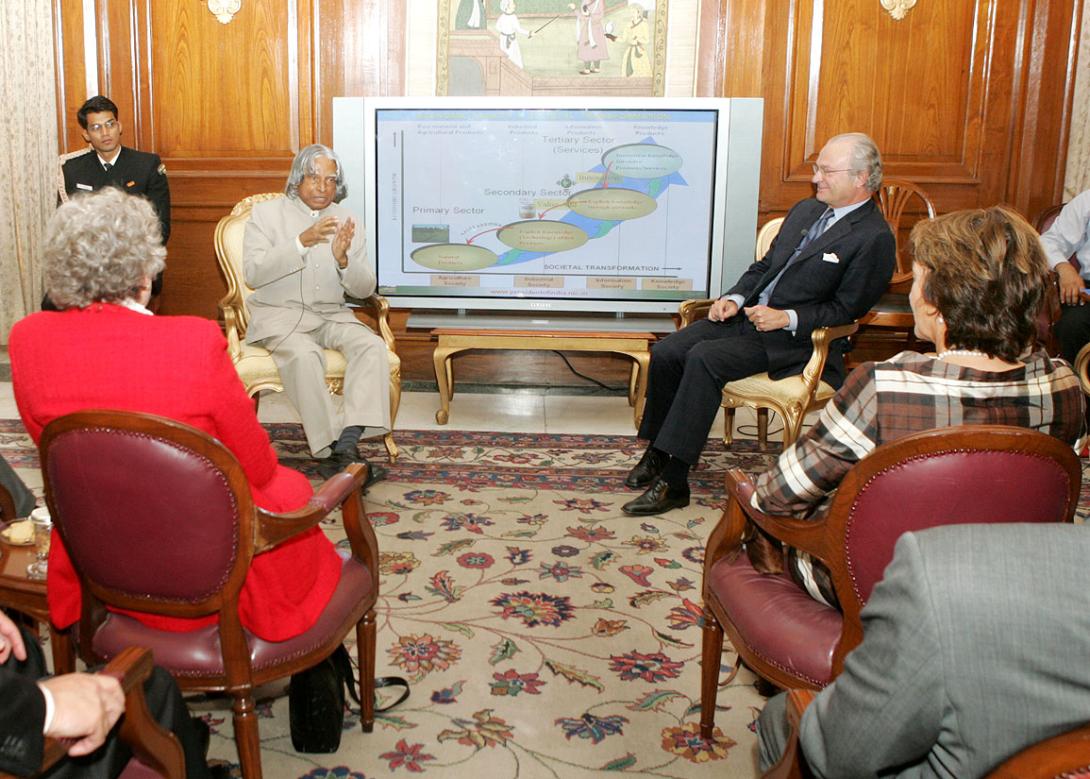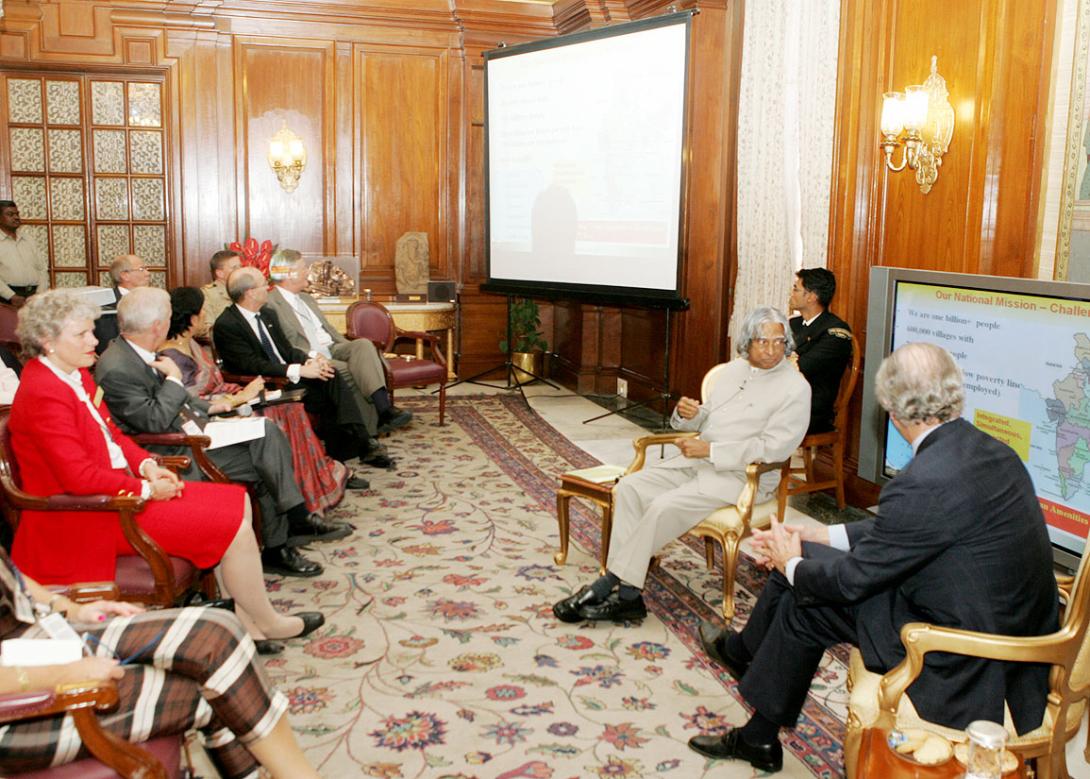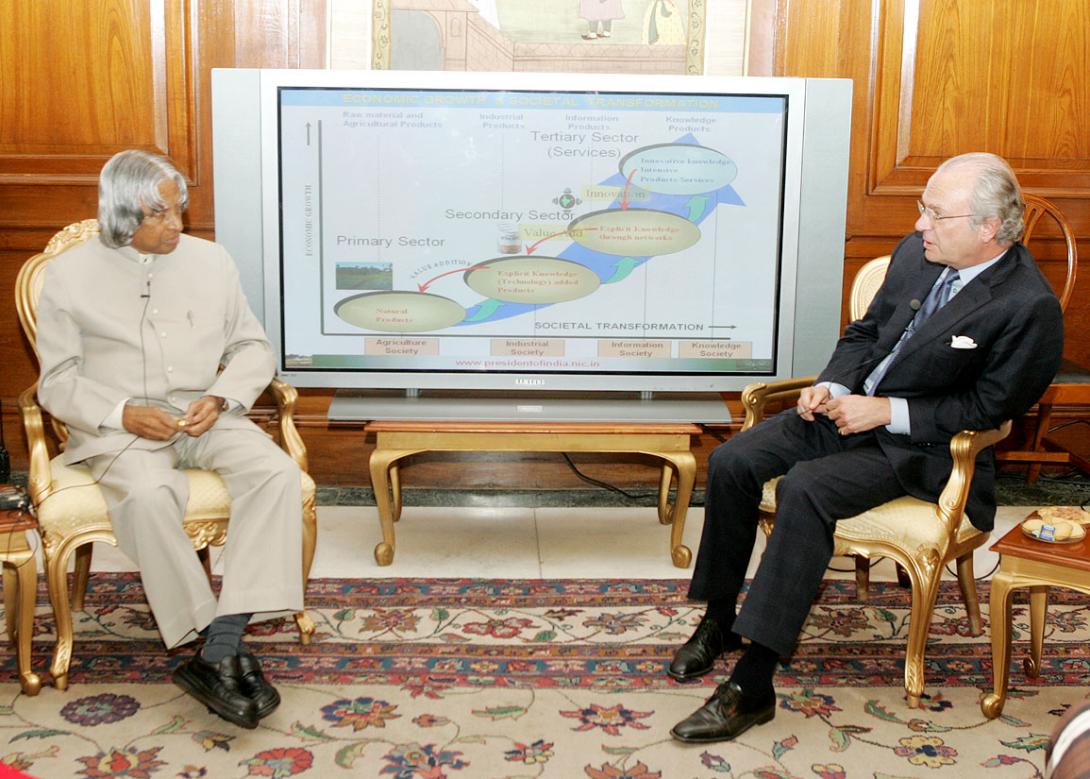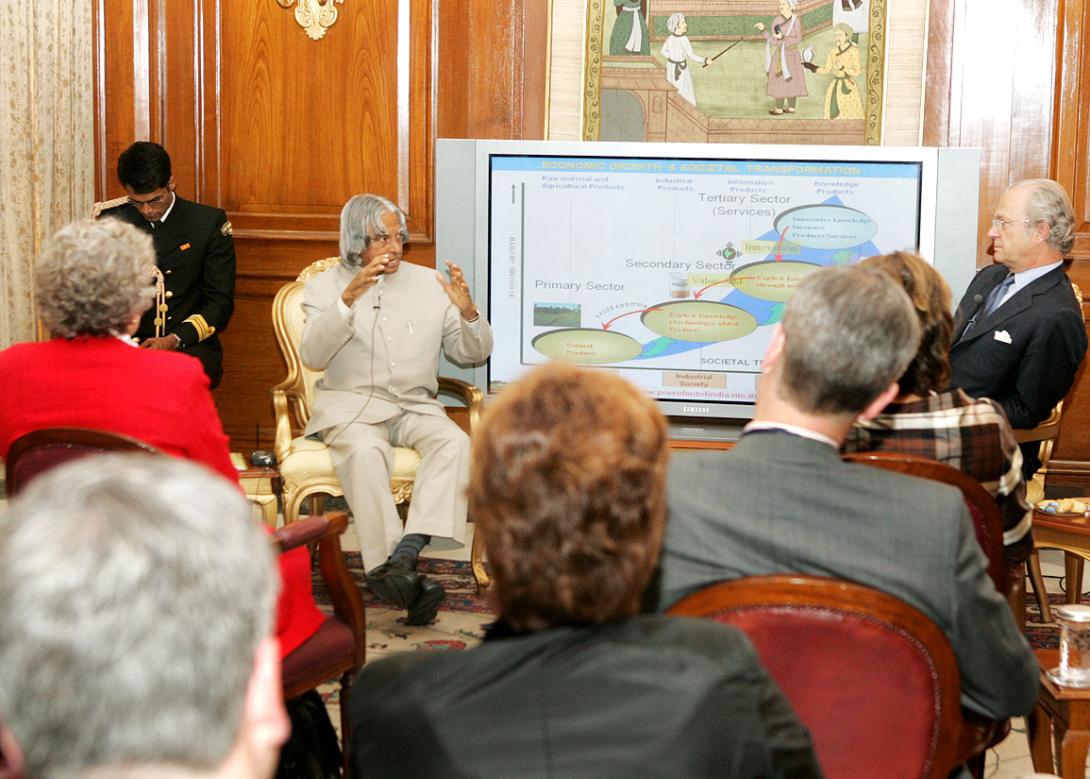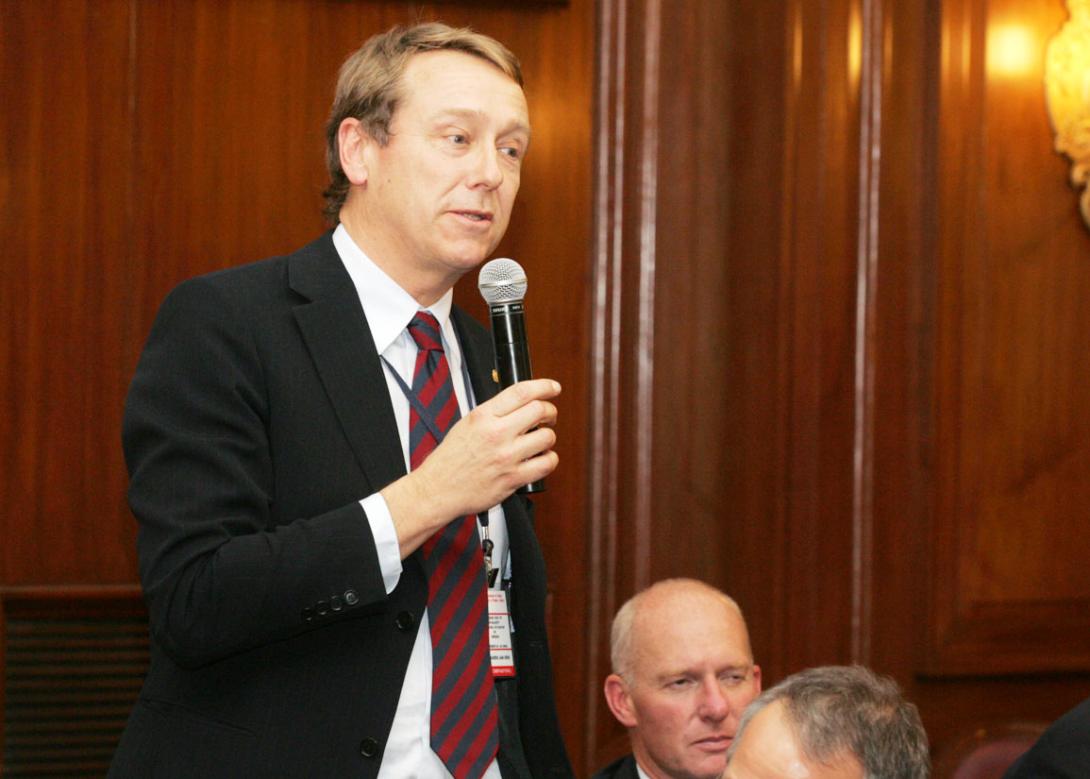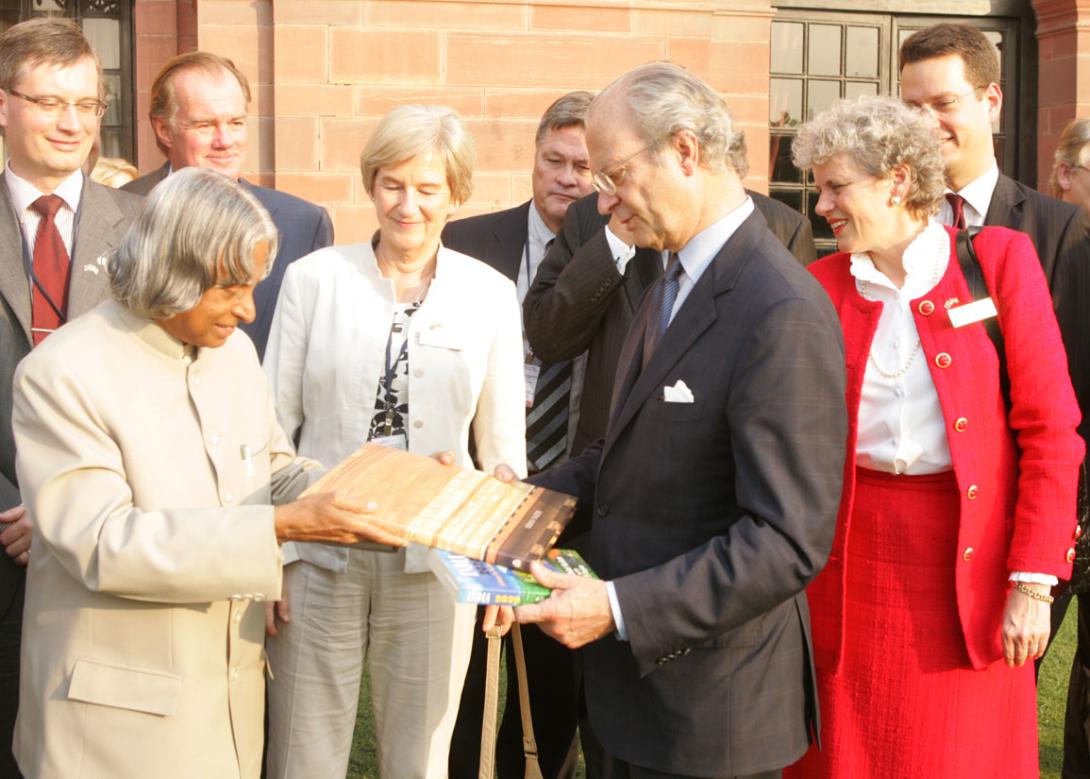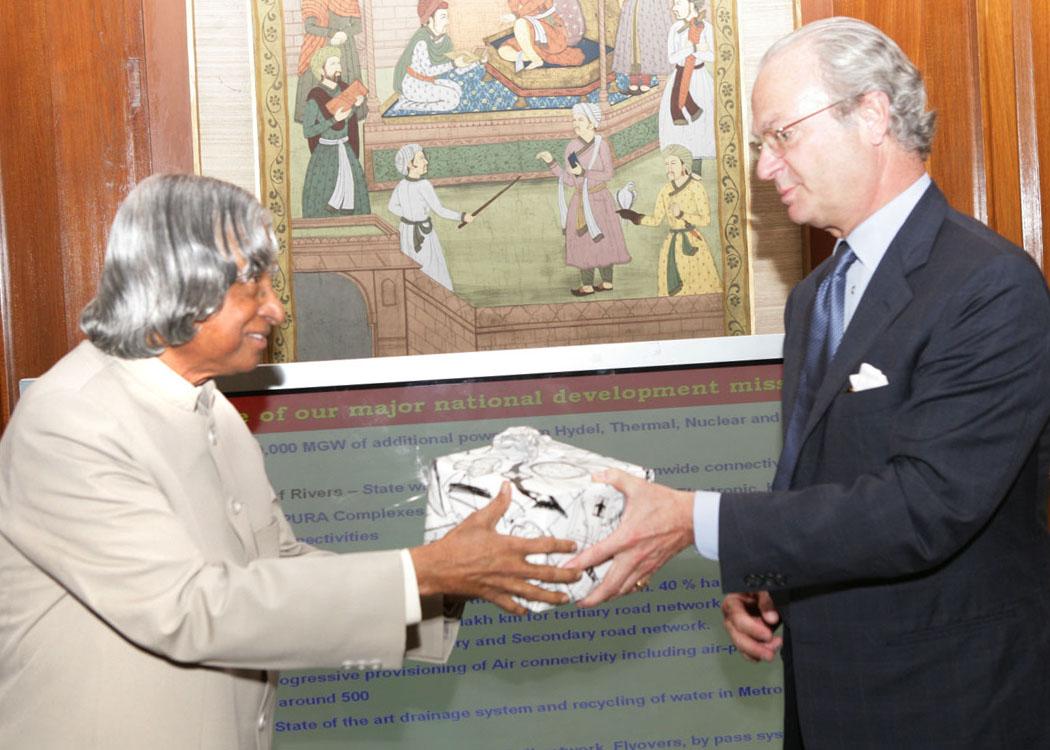Some Thoughts On Indo And Swedish Co-Operation Meeting With The Delegation Of Royal Technology Mission Led By Hm King Carl Xvi Gustaf Of Sweden At Rashtrapati Bhavan
RASHTRAPATI BHAVAN, NEW DELHI : 24-11-2005
Bilateral Trade
The present bilateral trade between India and Sweden is around $ 1.5 billion. Both the countries can work to increase this trait to $ 10 billion by the year 2010. We have to work
Joint Technology Development
a. With the constant erosion of non-renewable fossil fuels, there is a need to enhance the use of solar energy for multiple applications. One of the key elements for conversion of solar energy into electrical energy is the silicon photovoltaic cell. Presently, the efficiency of the photovoltaic cell is 13% to 15%. Advent of nano-technology leads to carbon nano tubes. There is a promise for producing CNT based photovoltaic cells with an efficiency of 45% to 50%. India and Sweden can work together on this mission, which will be useful to many nations in the world.
b. With the convergence of Bio, Nano and Information technologies, we can work for solutions in healthcare for diseases such as autism, epilepsy, mental retardation, Parkinson and HIV/AIDS.
Joint Venture
Indian team and Swedish team can have a brain storming session and bring out the core competence of both the countries. From the set of core competencies we can select one core competence each of both India and Sweden. A product can be designed, developed and produced in large quantities by an Indo-Swedish joint venture using and marrying the core competence of both the countries. The product chosen should have international demand apart from meeting the needs of India and Sweden.
Virtual University
Recently, I inaugurated the Virtual University formed by the three old universities of India namely Madras, Calcutta and Mumbai through tele-education delivery system. These universities have already started some common programmes for the students based on their core competence. This virtual university envisages collaborative research, faculty and students exchange programme, capacity building through tele- education and content generation for distance education programme. I would suggest extending this virtual university to some of the Indian and Swedish universities for synergizing the learning process, collaborative research and capacity building based on the core-competence of both the countries. In addition it will promote better understanding and opportunities for interaction between the youth of both the countries. Areas of collaborative research could be nano-technology, biotechnology, biochemistry, ICT, telecom, and renewable energy.
Precision Manufacturing
Precision Manufacturing is the core competence of Sweden. I would request the members of the delegation to consider designing of a special training programme of three to six months for hundred Indian engineers on precision manufacturing through the Swedish industries. India and Sweden can take up joint venture projects in manufacturing sector.
Infrastructure Development for Tier-2 Cities
Besides the 20 large metros in India with a population of more or less 10 million, there are nearly 500 district towns with a population between 1 to 2 million, as many as 5,000 taluk towns with a population of 25,000 to 50,000 and one lakh village centres having a population of 1,000 to 5,000 persons each.
We are in the process of dispersing the economic activity to the Tier-2 cities. They need physical connectivity (road, rail and air), electronic connectivity, knowledge connectivity thereby creating economic connectivity. The infrastructure development is the priority area. India and Sweden can collaborate in all these connectivity missions.

